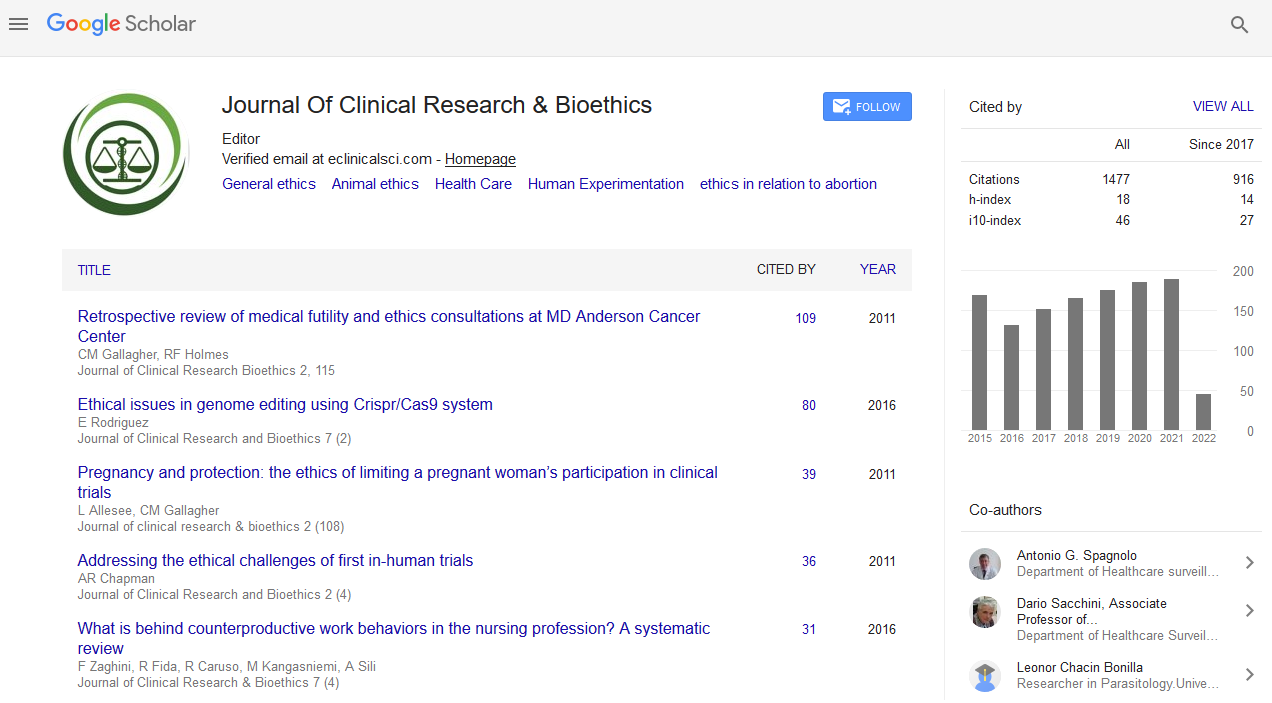PMC/PubMed Indexed Articles
Indexed In
- Open J Gate
- Genamics JournalSeek
- JournalTOCs
- RefSeek
- Hamdard University
- EBSCO A-Z
- OCLC- WorldCat
- Publons
- Geneva Foundation for Medical Education and Research
- Google Scholar
Useful Links
Share This Page
Journal Flyer

Open Access Journals
- Agri and Aquaculture
- Biochemistry
- Bioinformatics & Systems Biology
- Business & Management
- Chemistry
- Clinical Sciences
- Engineering
- Food & Nutrition
- General Science
- Genetics & Molecular Biology
- Immunology & Microbiology
- Medical Sciences
- Neuroscience & Psychology
- Nursing & Health Care
- Pharmaceutical Sciences
Abstract
Sclero-Resistance, Sclero-Sensibility and Sclero-Sensitization: The Role of the Tunica Adventitia in Sclerotherapy
Aim
The aim of this study was to assess the importance of the tunica adventitia in sclerotherapy, measuring sclero-resistance, sclero-sensitivity and sclero-sensitization parameters.
Materials and Methods
900 cases of Great Saphenous Vein (GSV) varicosity treated with Sigg-method sclerotherapy were examined for sclero-resistance as indicated by an ultrasound sclero-resistance marker (SRM+). Sclero-sensitivity was assessed by contact thermography in 356 cases of GSV varicosity with collagen alterations treated with Sigg sclerotherapy. Sclero-sensitization and treatment efficacy were assessed in 50 cases of non-reflux related telangiectasias recurring after a first course of foam microsclerotherapy and retreated with a second sclerotherapy regimen administered together with intradermal glycosaminoglycans (GAG).
Results
Indicative of incomplete parietal fibrosis, the ultrasound marker SRM+ was most frequently found among patients with recurrence. The degree of sclero-sensibility was found to be inversely proportional to proteoglycan concentrations in the Ground Substance (GS), which in turn was seen to present in differing amounts in the various connective tissue diseases. Sclerotherapy combined with the administration of GAGs proved significantly effective in the treatment of recurrent telangiectasias, indicating GAG sclero-sensitizing properties
Conclusions
The efficacy of sclerotherapy depends on eliciting a regular fibrotic reaction starting from the connective tissue of the adventitia, which is modulated by ground substance GAG metabolism.


